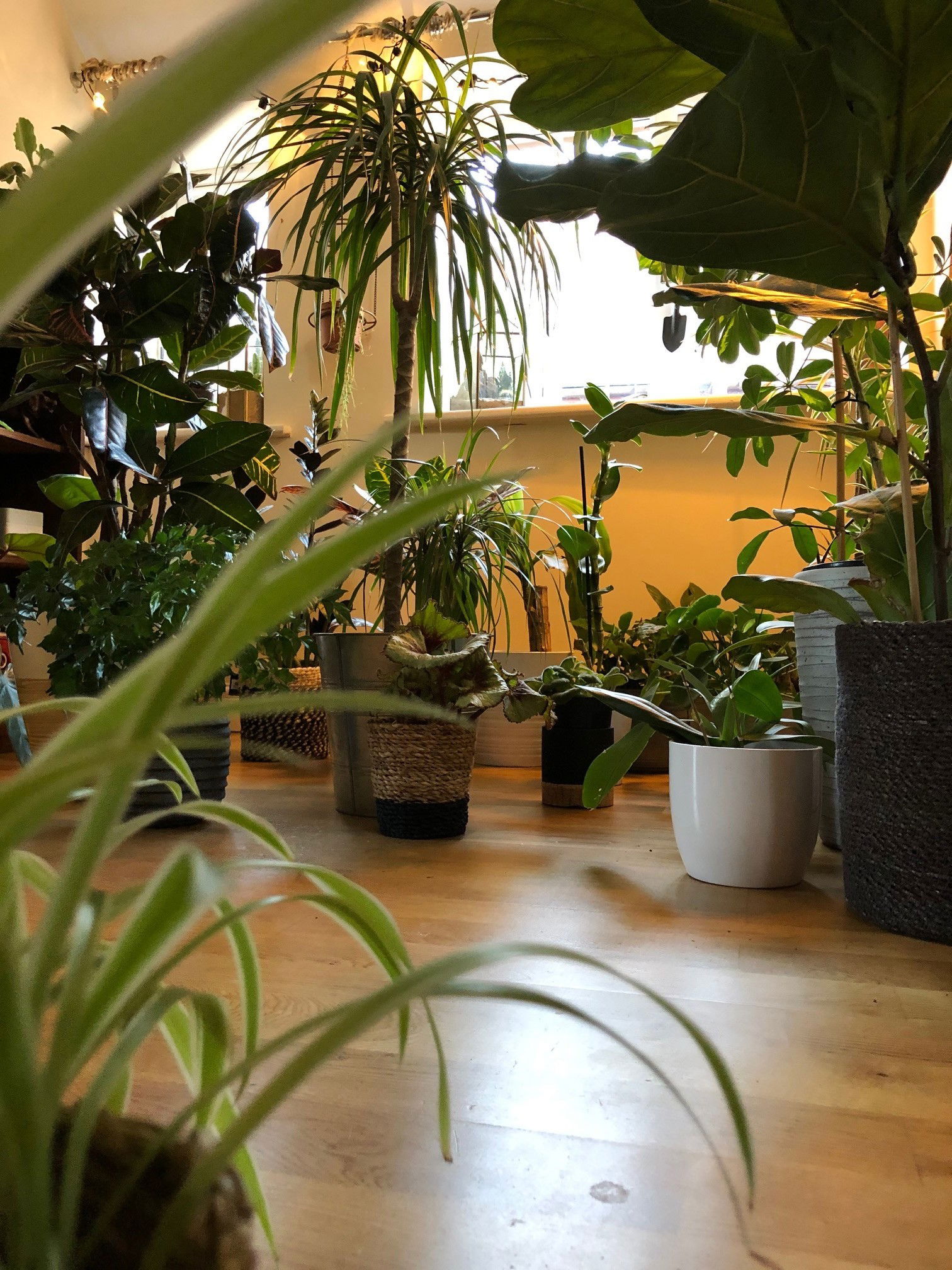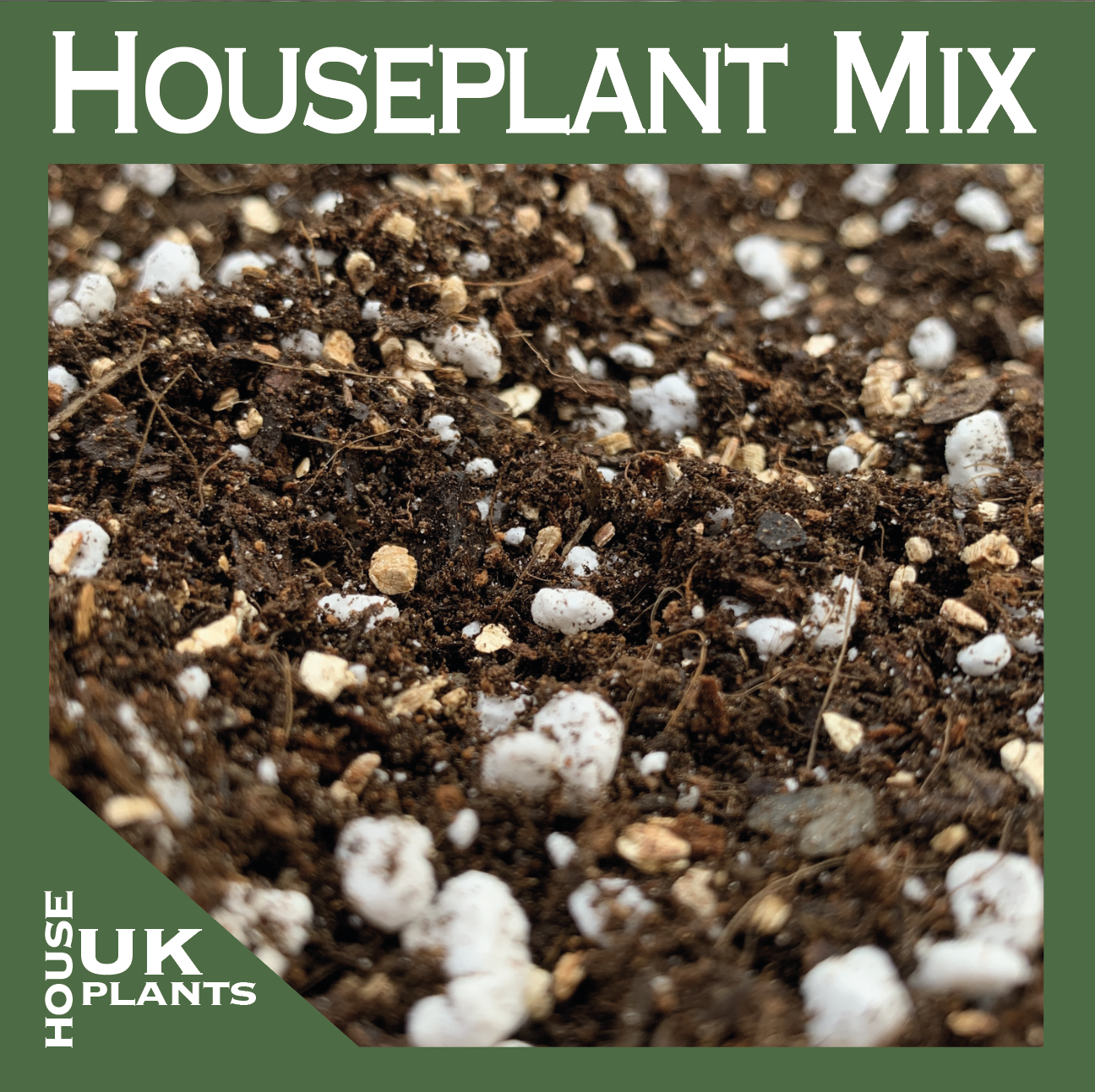Contents
- Top Tips
- Preventing Dehydration
- Hiring a Uneducated Plant-Sitter
Need the answer to a specific plant query? Book a 1-to-1 video call with Joe Bagley, the website's friendly author, to overcome and address your niggling problem! Available on iMessage, WhatsApp, Facebook Messenger & more.
1. Top Tips
- Slowing photosynthesis, respiration and transpiration will slow the plant's growth, thus reducing the risk of dehydration.
- On the day before your departure, soak the compost thoroughly, allowing the excess moisture to drain away.
- Avoid waterlogged conditions as it'ill quickly develop into root rot and eventual death.
- Introduce a humidity tray to increase the surrounding moisture and decrease transpiration and dehydration. This step is vital for those who aren't using a plant sitter during this time.
- Place the plants on the floor, around two metres from a north or east-facing window, and at least two metres from a radiator.
- An ambient temperature of around 16ºC (61ºF) will significantly reduce the rate of photosynthesis and therefore the water-uptake in the roots.
- Except for Carnivorous plants, Azaleas, Ferns and Bonsai, most specimens can survive up to ten days in this environment without additional care. Please note that this is a projection and not an absolute estimation.
- Some specimens, (especially small potted plants) will need watering every few days, so it's essential to get someone to care for them frequently.
 Situating plants on the ground a few metres away from a north-facing window will reduce the rate of dehydration due to the cooler temperatures and absence of direct sun.
Situating plants on the ground a few metres away from a north-facing window will reduce the rate of dehydration due to the cooler temperatures and absence of direct sun.
2. Preventing Dehydration
The biggest issue during a holiday is dehydration. Whether that's because of a lack of soil moisture, too much sun or dry air, this section will discuss the five ways in which you can preserve soil moisture for longer - with or without the help of a plant carer. If you're only going away for a week, you'll get away with not needing someone for most specimens.
Repotting
If the specimen has become pot bound, now is a good time for transplanting into a bigger container. A specimen that has a higher ratio of roots to soil will significantly speed up the process of dryness, as the roots will fight over the same moisture. Click here to learn more about repotting and which soil to use per plant.
A Good Soak
Give the compost a good soak 24hrs before departure and allow the excess moisture to drain away. It's important not to promote water-logged conditions as this will quickly lead to anaerobic conditions and eventual root rot. Coupled with the fact that no one may tend to them for over a week, this rot will immediately reach havoc within the pot, spreading to the lower portions of the plant and killing it outright.
A succulent or cactus can survive weeks without water, and especially with a bright indirect setting (like on the floor), this estimation can elongate. If you're going away for less than two weeks, it's best to keep them slightly on the drier side to avoid rot and other diseases.
Humidity
Transpiration is where a plant loses stored moisture through the leaves, commonly sped up higher rates of photosynthesis and sunlight. Introducing a humidity tray will provide a pocket of humidity around the plant, reducing the severity of dry air.
For even more moisture, group specimens together within 50cm of each other.
Light
Lay the plants on the floor two metres from a north or east-facing window. Instead of providing bright light with a possibility of sunshine, reduce the brightness to prolong the soil drying process. Sun-loving specimens, for example, desert Cacti, can still be placed in this environment, but make sure to keep them on the drier side to avoid root rot and over-watering.
Temperature
Reducing the local temperature to around 16ºC (61ºF) will not only decrease the rate of drying soil, but it's also a variable that can affect the rates of photosynthesis and transpiration. As mentioned above, you've got to force slower growth, so that it's just 'ticking over' for the time that you're away.
We've just opened our online shop!
Want to buy top quality products with FREE Delivery? Click here to view our new store, including everything from indoor potting mixes to moss pole hooks.

Peat-Free 'Houseplant Potting Mix'. £4.95 + FREE Delivery!
Hiring an Uneducated Plant Sitter
(& how to turn them into a pro)
Asking a non-plant-orientated person to care for your babies shouldn't be nerve-wracking. In essence, this section will discuss some vital tips on providing a bulletproof document that even a brown-fingered individual can follow!
Rotas
Creating a schedule for the amount and frequency of waters per week has been proven to be highly successful. Although this step is best for those who still have a few weeks before their departure, think about how and when the plants need another drink - we'd recommend a 500ml plastic bottle as a guideline for the amount of water per application. An example of what to write could be - "irrigate every Monday using three-quarters of a bottle of water.
State the Obvious
Although this may come across as patronising, write a quick paragraph highlighting the bare bones of indoor horticultural care. It's essential to cover every aspect of cultivation, including the avoidance of water-logging, dehydration and the saturation of flowers or foliage.
Discuss how to keep the plants in the same original location, as situating them too close to a window or radiator will speed up the process of dehydration.
If a plant needs submerging, for instance, a Moth Orchid, be sure to state this in the document - you can even lay out a small bucket of water to help them out.
If there are yellowing leaves or debris that are almost ready to remove, ask them to prune it when necessary.
Drainage
Place your plants on a bed of dry stones to decrease the risk of water-logging. This step is particularly recommended for bark-based soils (like Orchids) and sandy potting-mixes for cacti and succulents as their soil profiles are very well-draining.
State its Quirks
Although each plant is slightly different, most will be happy under the 'keep the soil moist' approach. You may, however, have a few specimens that need specialist care to avoid death.
If, for instance, a specimen is under the reign of root rot, be sure to state this in your document. Although most plants will benefit from continual moist soil, a diseased specimen will need slightly drier compost to increase the amount of oxygen that the roots can access.
For cuttings, state how they must be kept in a plastic bag to improve the surrounding moisture. As they'll lack roots, the water will be obtained via the stomata in the leaves, thus needing higher humidity than other specimens. With those rooting in water, change the water each week to present a healthy growing environment with the lowered chance of blackleg.
A specimen that's housing pests or diseases must be kept under a watchful eye for potential development. Along with quarantining it, you may have to write a brief description into addressing a pesticide or fungicide to the plant-sitter. State how its cubbyholes and under-leaves must be administered, along with preparing it for them beforehand for an easier experience. For more information about addressing pests or diseases, be sure to click on the appropriate links!
Book a 1-to-1 Consultation with THE HOUSEPLANT DOCTOR™
Need realtime advice for your houseplants? Book a video or message consultation with expert Joe Bagley, THE HOUSEPLANT DOCTOR™ (author or ukhouseplants.com). Choose between a ten or thirty-minute session & a platform of your choice (WhatsApp, FaceTime, Facebook Messenger or Zoom). Ask unlimited questions in one session, including queries on your dying/challenging plants, pests eradication, terrariums, repotting advice & everything in between! Available worldwide.